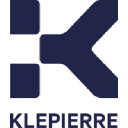🚀 Sign up Free for Public Company Valuation & Insights!
Sign up for free to get access to the best public company valuation and insights. Get started today and unlock the potential of your investments!
Sign Up
Klépierre
Real estate / Real Estate and Retail
At a Glance | Core Facts | Company | Industry | Competitors | Stock Swings | News | Income | Balance | Cash Flow | Growth | Enterprise | Ratios | Metrics | Dividends | Risks | SWOT | Porter's Five Forces | PEST | Score Positive | Clusters | Reports | Web1. Increased Financial Leverage: Klépierre SA's high debt-to-equity ratio indicates that they have a relatively high amount of debt compared to equity. This could put the company at risk of becoming over-leveraged and can reduce their financial flexibility.
2. Reduced Shareholder Returns: As the company finances its investments using debt, it can reduce the return generated for the shareholders. Higher leverage means that the company’s profits must be used to pay off the debt interest , reducing the return generated for the shareholders.
3. Interest Risk: A higher debt-to-equity ratio can also lead to increased interest rate risk. As the company continues to take on more debt, the risk of an increase in interest rates becomes higher, leading to higher debt servicing costs.
4. Credit Rating Risk: The ratio also affects the company’s credit rating, as investors and creditors view companies with high debt-to-equity ratios as risky investments. This could lead to a lower credit rating and more expensive financing options in the future.